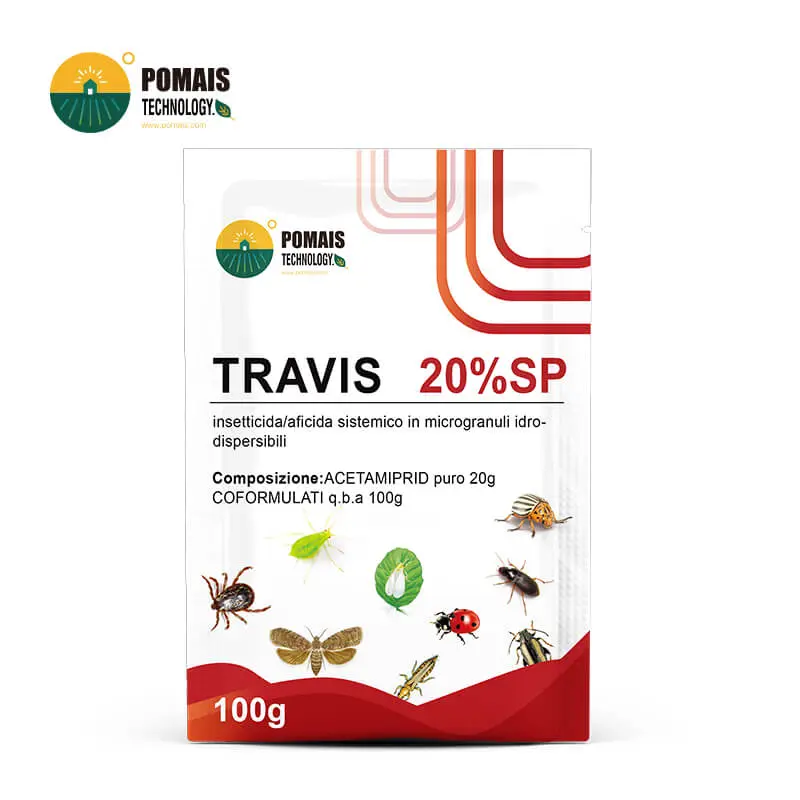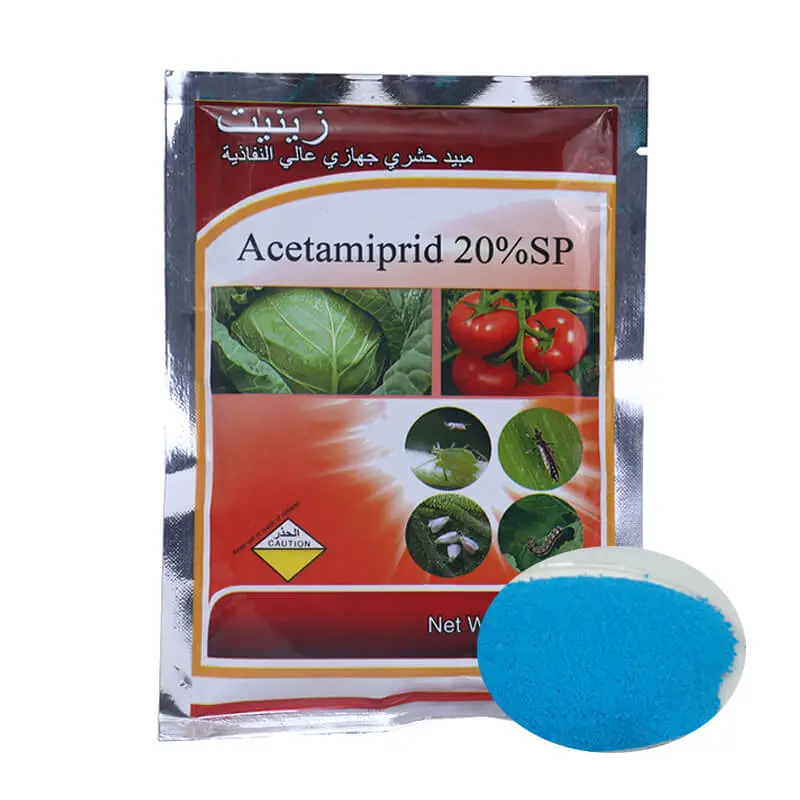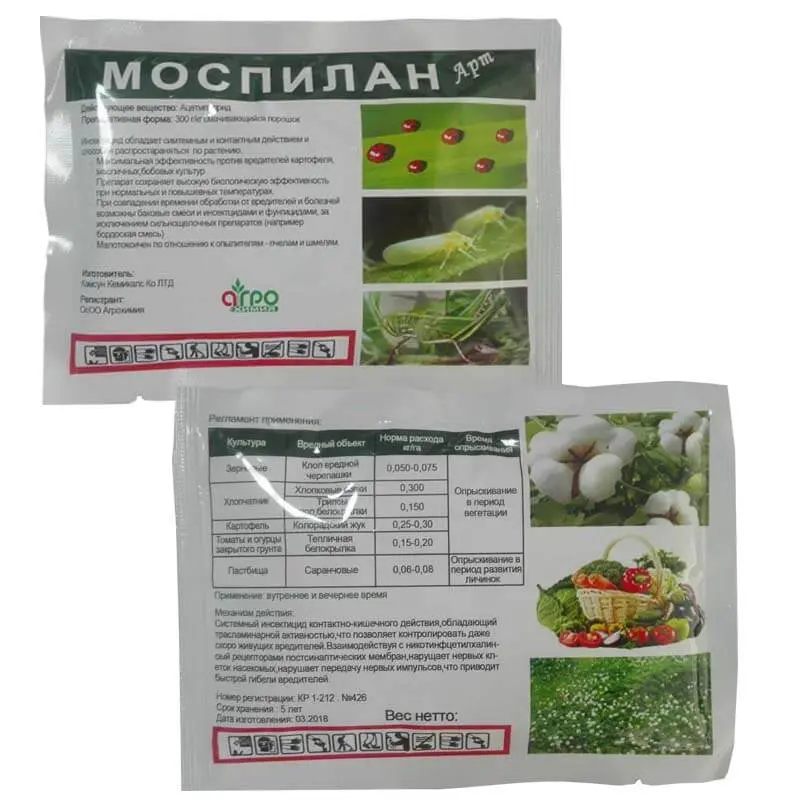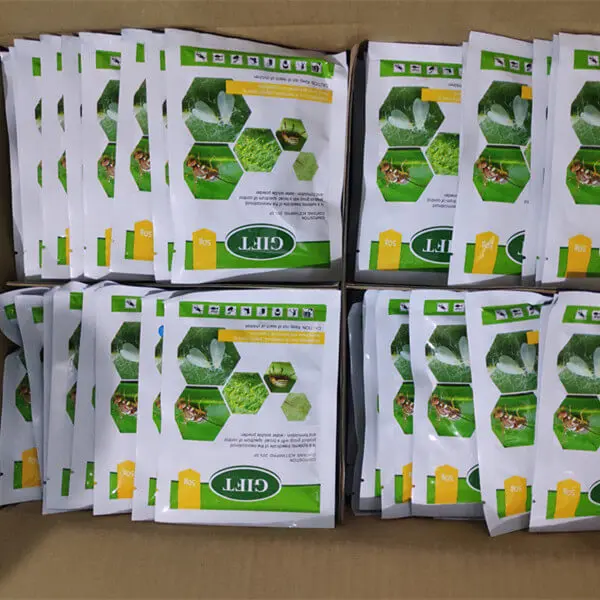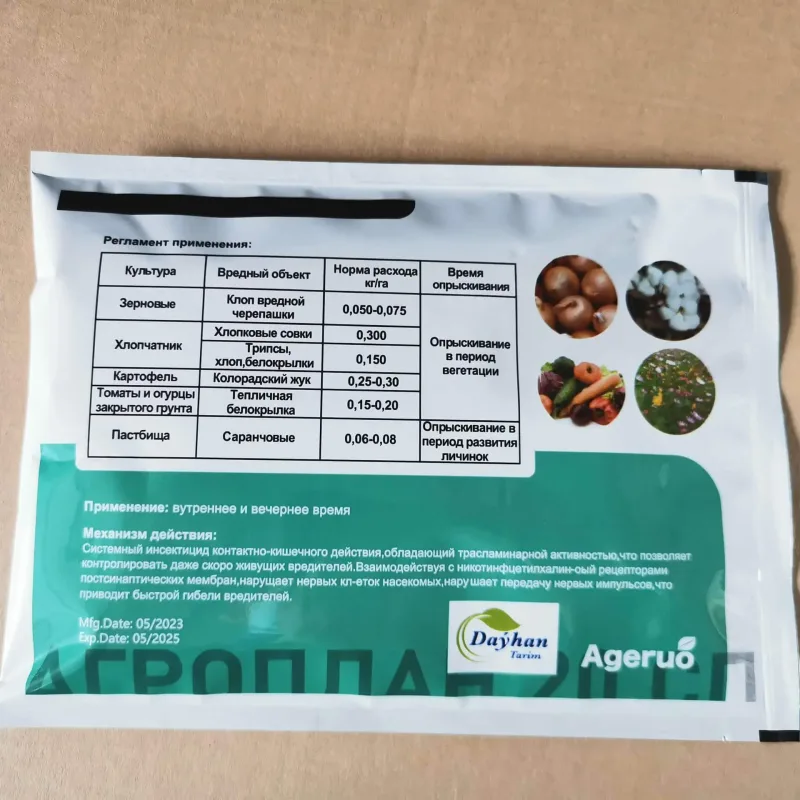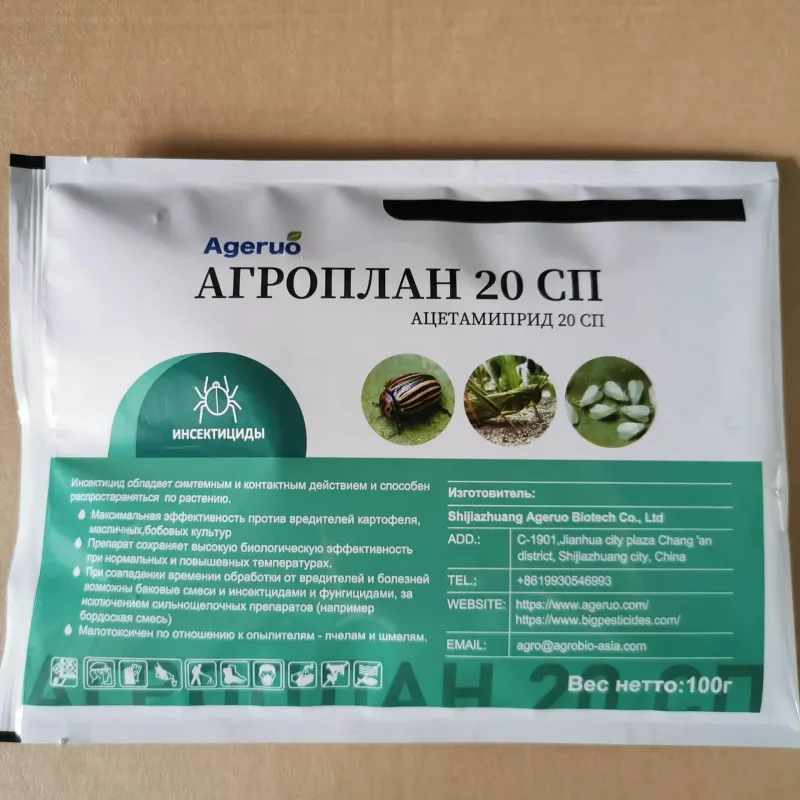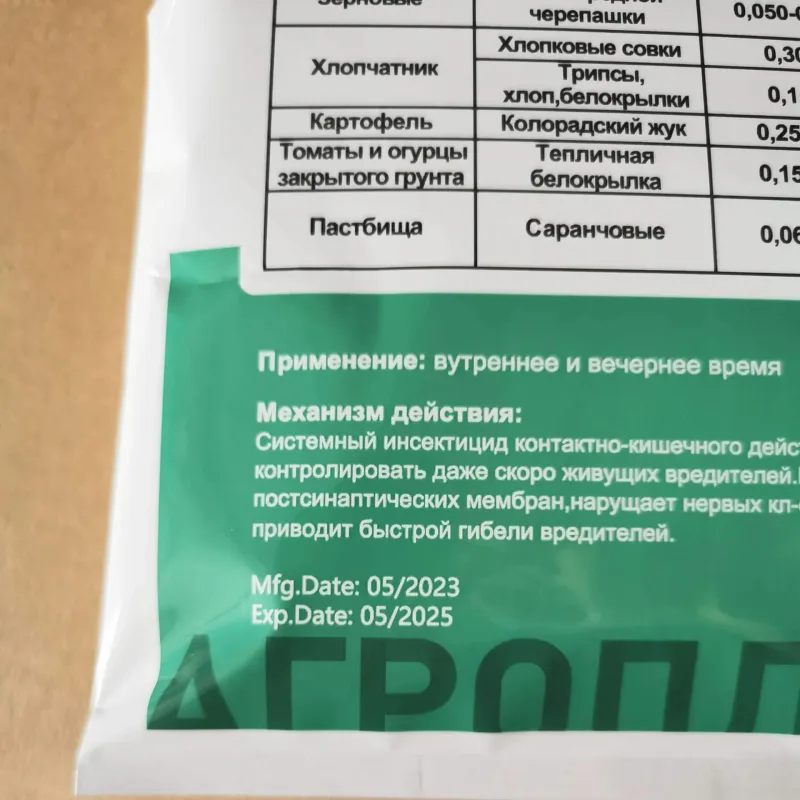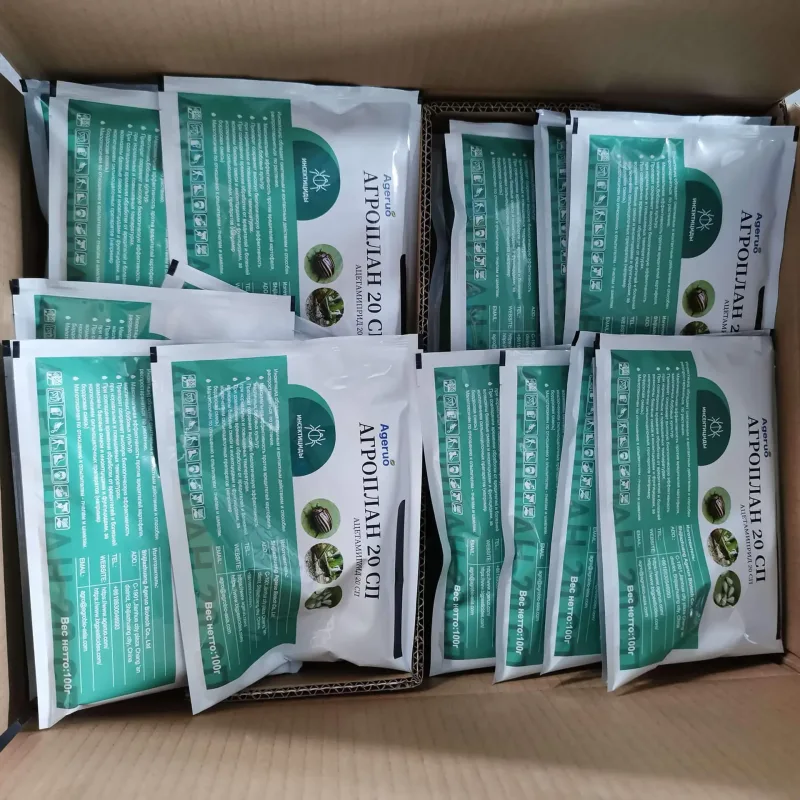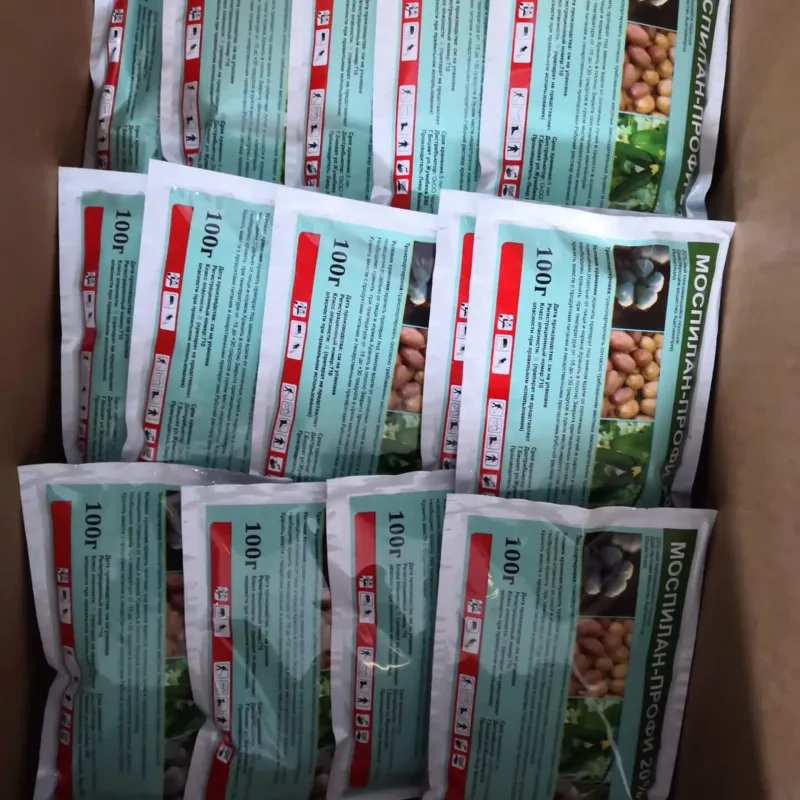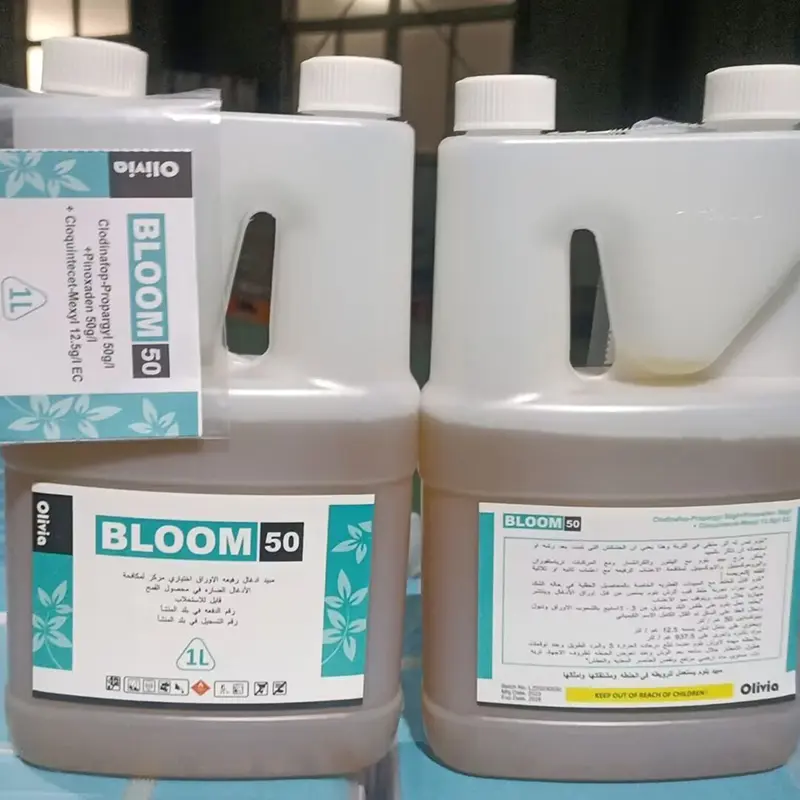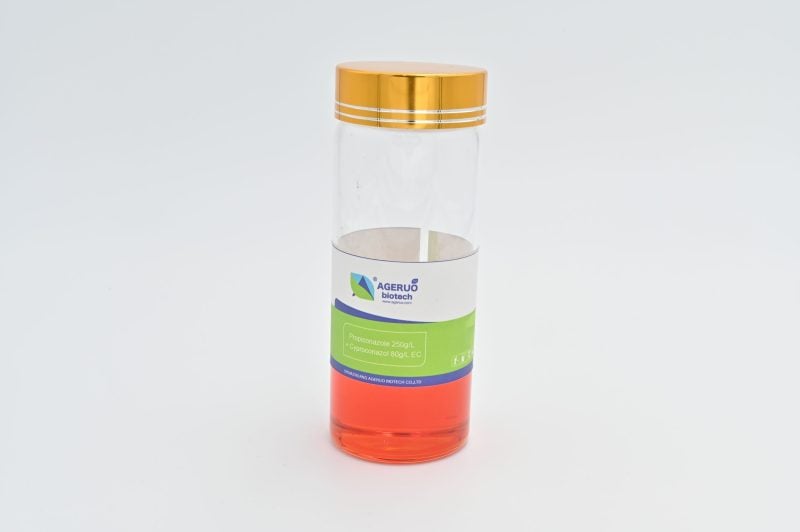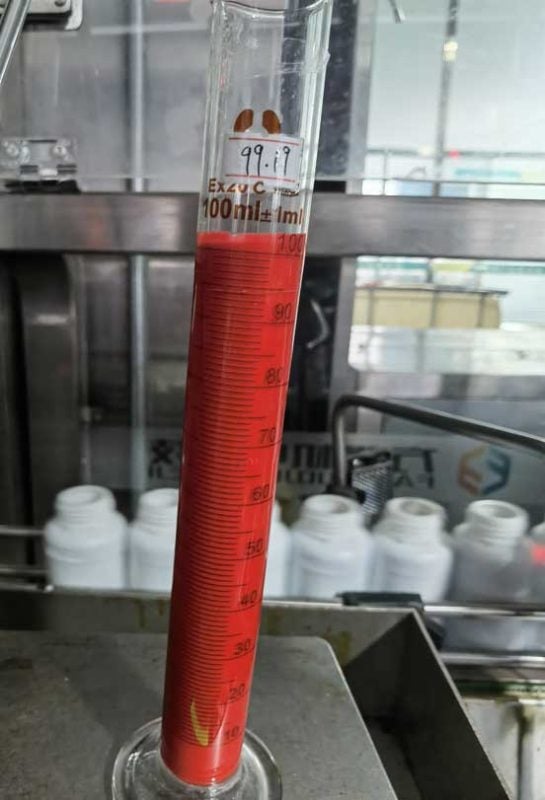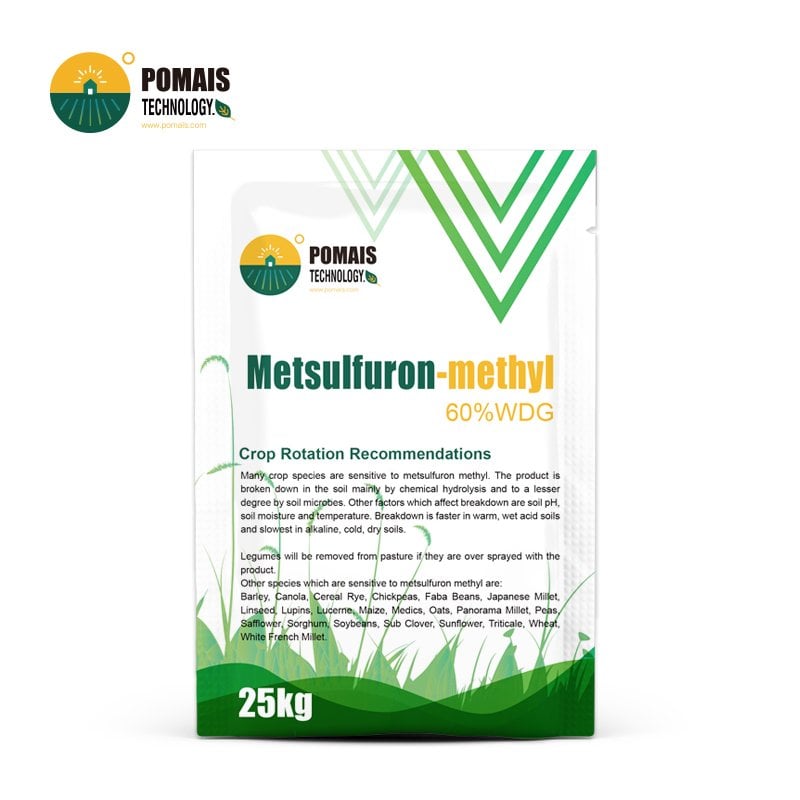Acetamiprid Insecticide
Acetamiprid is a broad-spectrum, systemic neonicotinoid insecticide widely used in agriculture for its effectiveness against a range of pests, including aphids, whiteflies, and thrips. This insecticide acts on nicotinic acetylcholine receptors in the nervous system, causing paralysis and death in target insects. Acetamiprid products are available in formulations like 20% SP, 15% SP, and 20% WP, ensuring versatile usage across various crops and agricultural conditions.
- Designed for Professional Buyers & Bulk Orders
- This product is available for business purchase and large-scale distribution.
- We support custom packaging, labeling, and formulation to meet your market needs.
- Let’s build your brand together.

About Acetamiprid Insecticide
About Acetamiprid Insecticide
| Product Name | Acetamiprid |
| Chemical Name | (E)-N1-[(6-chloro-3-pyridyl)methyl]-N2-cyano-N1-methylacetamidine |
| CAS Number | 135410-20-7 |
| Chemical Formula | C10H11ClN4 |
| Formulations Available | 20% SP, 25% WP, 3% EC, 70% WDG |
| Target Pests | Aphids, whiteflies, leafhoppers, thrips, and other sucking insects |
| Suitable Crops | Cotton, vegetables, fruit trees, soybeans, cereals |
| Shelf Life | 2 years |
Acetamiprid is a versatile, broad-spectrum insecticide effective against a variety of sucking pests, widely applied in crop protection for both systemic and contact action. Let me know if additional customization is needed!
Characteristics
- Systemic and Contact Action: Acetamiprid is absorbed quickly by plant tissues and acts through both contact and ingestion, making it effective against piercing-sucking pests.
- Broad-Spectrum Control: Effective against a wide range of insect pests in Hemiptera, Lepidoptera, Coleoptera, and Thysanoptera, Acetamiprid products offer long-lasting control.
- High Compatibility with Other Insecticides: Often used in combination with insecticides like Bifenthrin and Abamectin to combat resistant pest populations.
- Temperature Resilience: Works effectively below 25°C, with a penetrative action that is especially advantageous in controlling brown planthoppers and aphids.
Mode of Action and Advantages
Mode of Action: Acetamiprid targets the insect nervous system by binding to nicotinic acetylcholine receptors, causing accumulation of acetylcholine at synapses. This disrupts neural transmission, leading to paralysis and eventual death.
Advantages:
- Long-Lasting Residual Effect: Remains effective over extended periods, ensuring continuous pest control.
- Rapid Action: Known for its fast knockdown effect on pests, making it effective against highly active insect populations.
- Resistance Management: With a unique mechanism of action, Acetamiprid is highly effective on pests resistant to organophosphates, carbamates, and pyrethroids.
- Versatile Application: Suitable for foliar spray and soil treatment on a variety of crops.
Acetamiprid Application Crops and Pest Control
Acetamiprid is a broad-spectrum, highly effective insecticide widely used for pest control in a wide range of crops. Its excellent systemic action makes it ideal for protecting crops from pests in agricultural production. Below are the main application areas of our products:
Cotton Pest Control
Acetamiprid is effective against common pests such as cotton aphids and bollworms, helping cotton farmers protect their crops from pests and ensuring healthy cotton growth.
Vegetable Pest Control
Acetamiprid can be widely used to control aphids, whiteflies, and other pests in tomatoes, cucumbers, and other vegetable crops. It ensures healthy growth and guarantees high-quality yields for vegetable farmers.
Fruit Crop Pest Control
Acetamiprid is effective for pest control in citrus, grapes, and other fruit crops. It effectively suppresses aphids, fruit flies, and other pests, helping farmers improve fruit production and increase market competitiveness.
Other Crop Protection
Acetamiprid is also widely used in other crops such as soybeans, corn, and rice paddies, effectively controlling various types of pests and ensuring healthy crop growth while boosting yields.
By precisely controlling pests across a variety of crops, Acetamiprid helps agricultural producers optimize crop health, reduce pest impacts, and enhance crop quality and yield.
| Formulation | Crop | Target Pest | Dosage | Application Method |
|---|---|---|---|---|
| 20% SP | Cucumbers | Aphids | 50-70 g/ha | Foliar Spray |
| 15% SP | Citrus | Leafhoppers | 40-60 g/ha | Foliar Spray |
| 20% WP | Tobacco | Thrips | 60-80 g/ha | Foliar Spray |
| 220g/L SL | Apples | Whiteflies | 2-3 L/ha | Soil Treatment |
Formulation Combinations
For expanded insect control, Acetamiprid is often combined with other agents, enhancing its effect on challenging pest populations:
- Acetamiprid + Bifenthrin: Commonly used in Africa for its dual insecticidal action against resistant species.
- Acetamiprid + Abamectin: Combines the systemic action of Acetamiprid with Abamectin’s efficacy on mites, effective for crops like tomatoes.
- Thiamethoxam and Acetamiprid: This combination helps in achieving pest control over both foliar and soil-dwelling insects.
- Clothianidin and Acetamiprid: Used for rotational pest management, reducing resistance development in pests.
For more dosage forms, please see: List of Acetamiprid Mixing Formulations
Safety and Handling
- Protective Gear: Use gloves, masks, and protective clothing during application to prevent contact and inhalation.
- Storage: Store in a cool, dry place, away from alkaline substances and food storage areas.
- Environmental Impact: Toxic to silkworms and should be used cautiously around mulberry trees. Not recommended for use near pollinators due to high toxicity.
Safety and Environmental Friendliness of Acetamiprid Products
Acetamiprid not only excels in effectiveness but also has a tightly controlled environmental impact that meets global agri-environmental standards.
Low Environmental Residues
Acetamiprid has low residues in soil and water, causing minimal environmental impact during use. The product breaks down faster, reducing the accumulation of chemicals in farmland and ensuring sustainable agricultural practices.
Compliance with International Environmental Standards
We strictly adhere to international environmental standards to ensure that Acetamiprid maintains low toxicity and residue levels during use, thereby safeguarding the health and safety of the agro-ecosystem.
Safety for Plants and Animals
Acetamiprid products have excelled in safety tests, ensuring that their use minimizes the impact on ecosystems and non-target organisms.
Safety for Bees and Beneficial Organisms
Acetamiprid‘s low toxicity does not cause significant harm to beneficial insects such as bees. This reduces the impact on key pollinators in the ecosystem, ensuring the stability of the agricultural environment.
Safety for Birds
Studies show that Acetamiprid has very low toxicity to birds, meeting global agricultural environmental protection standards and minimizing the negative impacts of agricultural production on ecosystems.
Impact on Water and Soil
During use, Acetamiprid does not pollute water sources or affect the long-term fertility of the soil. It fully complies with sustainable agricultural standards, guaranteeing the long-term ecological stability of farmland environments.
Acetamiprid Quality Assurance and Certification
We are committed to providing our customers with the highest quality products. All Acetamiprid products undergo strict quality control to ensure the stability and safety of each batch.
ISO 9001:2000 Certification
Our manufacturing facilities are ISO 9001:2000 certified, ensuring that the quality management of the production process meets international standards.
SGS Quality Testing Certification
Each batch of Acetamiprid products has passed SGS quality testing to ensure the purity of ingredients and stability of active substances.
Rigorous Raw Material Testing
All raw materials undergo rigorous quality testing before entering the production line to ensure the high quality of the final product.
Customized Services and Packaging Options
To better meet the needs of our global customers, we offer personalized packaging and labeling customization services to ensure that our products meet the requirements of local markets.
Packaging Options
We provide a variety of packaging options, including 20L/bottle, 200L/drum, and other specifications to meet different customer needs.
Transportation Safety
According to customer requirements, we provide packaging with different specifications and materials to ensure the safety of products during transportation and effectively reduce transportation costs.
Labeling and Brand Customization
We offer professional label design and brand customization services to help customers improve their brand image and enhance market competitiveness. If you have special labeling needs, our design team will provide professional support to ensure compliance with local laws and regulations.
Global Market Coverage and Compliance
Our Acetamiprid products have been widely exported to a number of markets around the world, including Middle East, Russia, Africa, South America, and other regions. Our products are fully compliant with the agricultural standards of each country.
ICAMA Registration
Our products are ICAMA registered and comply with the agricultural regulations of many countries, including China, Russia, and the United States, ensuring legal sales in the global market.
Global Compliance Certification
We strictly adhere to pesticide management regulations in various countries, ensuring that our products meet market access requirements and are legally used by customers around the world.
Technical Support and Customer Service
As a professional pesticide supplier, we not only provide high-quality products but also offer comprehensive technical support to ensure customers achieve the best results during use.
Product Use Training
We provide customers with detailed instruction manuals and can offer online training based on customer needs to ensure correct product usage.
Regular Technical Support
Our technical team will regularly communicate with customers to provide the latest agricultural control technologies and product usage advice, helping customers achieve the best crop protection results.
Successful Cases
We have worked with numerous agricultural companies globally, and our products have achieved remarkable results in controlling pests in different crops. Contact us for more success stories, and we will help you enhance crop yield and quality.
FAQ: All About Acetamiprid
| Product Name | Acetamiprid |
| Chemical Name | (E)-N1-[(6-chloro-3-pyridyl)methyl]-N2-cyano-N1-methylacetamidine |
| CAS Number | 135410-20-7 |
| Chemical Formula | C10H11ClN4 |
| Formulations Available | 20% SP, 25% WP, 3% EC, 70% WDG |
| Target Pests | Aphids, whiteflies, leafhoppers, thrips, and other sucking insects |
| Suitable Crops | Cotton, vegetables, fruit trees, soybeans, cereals |
| Shelf Life | 2 years |
Acetamiprid is a versatile, broad-spectrum insecticide effective against a variety of sucking pests, widely applied in crop protection for both systemic and contact action. Let me know if additional customization is needed!
Characteristics
- Systemic and Contact Action: Acetamiprid is absorbed quickly by plant tissues and acts through both contact and ingestion, making it effective against piercing-sucking pests.
- Broad-Spectrum Control: Effective against a wide range of insect pests in Hemiptera, Lepidoptera, Coleoptera, and Thysanoptera, Acetamiprid products offer long-lasting control.
- High Compatibility with Other Insecticides: Often used in combination with insecticides like Bifenthrin and Abamectin to combat resistant pest populations.
- Temperature Resilience: Works effectively below 25°C, with a penetrative action that is especially advantageous in controlling brown planthoppers and aphids.
Mode of Action and Advantages
Mode of Action: Acetamiprid targets the insect nervous system by binding to nicotinic acetylcholine receptors, causing accumulation of acetylcholine at synapses. This disrupts neural transmission, leading to paralysis and eventual death.
Advantages:
- Long-Lasting Residual Effect: Remains effective over extended periods, ensuring continuous pest control.
- Rapid Action: Known for its fast knockdown effect on pests, making it effective against highly active insect populations.
- Resistance Management: With a unique mechanism of action, Acetamiprid is highly effective on pests resistant to organophosphates, carbamates, and pyrethroids.
- Versatile Application: Suitable for foliar spray and soil treatment on a variety of crops.
Acetamiprid Application Crops and Pest Control
Acetamiprid is a broad-spectrum, highly effective insecticide widely used for pest control in a wide range of crops. Its excellent systemic action makes it ideal for protecting crops from pests in agricultural production. Below are the main application areas of our products:
Cotton Pest Control
Acetamiprid is effective against common pests such as cotton aphids and bollworms, helping cotton farmers protect their crops from pests and ensuring healthy cotton growth.
Vegetable Pest Control
Acetamiprid can be widely used to control aphids, whiteflies, and other pests in tomatoes, cucumbers, and other vegetable crops. It ensures healthy growth and guarantees high-quality yields for vegetable farmers.
Fruit Crop Pest Control
Acetamiprid is effective for pest control in citrus, grapes, and other fruit crops. It effectively suppresses aphids, fruit flies, and other pests, helping farmers improve fruit production and increase market competitiveness.
Other Crop Protection
Acetamiprid is also widely used in other crops such as soybeans, corn, and rice paddies, effectively controlling various types of pests and ensuring healthy crop growth while boosting yields.
By precisely controlling pests across a variety of crops, Acetamiprid helps agricultural producers optimize crop health, reduce pest impacts, and enhance crop quality and yield.
| Formulation | Crop | Target Pest | Dosage | Application Method |
|---|---|---|---|---|
| 20% SP | Cucumbers | Aphids | 50-70 g/ha | Foliar Spray |
| 15% SP | Citrus | Leafhoppers | 40-60 g/ha | Foliar Spray |
| 20% WP | Tobacco | Thrips | 60-80 g/ha | Foliar Spray |
| 220g/L SL | Apples | Whiteflies | 2-3 L/ha | Soil Treatment |
Formulation Combinations
For expanded insect control, Acetamiprid is often combined with other agents, enhancing its effect on challenging pest populations:
- Acetamiprid + Bifenthrin: Commonly used in Africa for its dual insecticidal action against resistant species.
- Acetamiprid + Abamectin: Combines the systemic action of Acetamiprid with Abamectin’s efficacy on mites, effective for crops like tomatoes.
- Thiamethoxam and Acetamiprid: This combination helps in achieving pest control over both foliar and soil-dwelling insects.
- Clothianidin and Acetamiprid: Used for rotational pest management, reducing resistance development in pests.
For more dosage forms, please see: List of Acetamiprid Mixing Formulations
Safety and Handling
- Protective Gear: Use gloves, masks, and protective clothing during application to prevent contact and inhalation.
- Storage: Store in a cool, dry place, away from alkaline substances and food storage areas.
- Environmental Impact: Toxic to silkworms and should be used cautiously around mulberry trees. Not recommended for use near pollinators due to high toxicity.
Safety and Environmental Friendliness of Acetamiprid Products
Acetamiprid not only excels in effectiveness but also has a tightly controlled environmental impact that meets global agri-environmental standards.
Low Environmental Residues
Acetamiprid has low residues in soil and water, causing minimal environmental impact during use. The product breaks down faster, reducing the accumulation of chemicals in farmland and ensuring sustainable agricultural practices.
Compliance with International Environmental Standards
We strictly adhere to international environmental standards to ensure that Acetamiprid maintains low toxicity and residue levels during use, thereby safeguarding the health and safety of the agro-ecosystem.
Safety for Plants and Animals
Acetamiprid products have excelled in safety tests, ensuring that their use minimizes the impact on ecosystems and non-target organisms.
Safety for Bees and Beneficial Organisms
Acetamiprid‘s low toxicity does not cause significant harm to beneficial insects such as bees. This reduces the impact on key pollinators in the ecosystem, ensuring the stability of the agricultural environment.
Safety for Birds
Studies show that Acetamiprid has very low toxicity to birds, meeting global agricultural environmental protection standards and minimizing the negative impacts of agricultural production on ecosystems.
Impact on Water and Soil
During use, Acetamiprid does not pollute water sources or affect the long-term fertility of the soil. It fully complies with sustainable agricultural standards, guaranteeing the long-term ecological stability of farmland environments.
Acetamiprid Quality Assurance and Certification
We are committed to providing our customers with the highest quality products. All Acetamiprid products undergo strict quality control to ensure the stability and safety of each batch.
ISO 9001:2000 Certification
Our manufacturing facilities are ISO 9001:2000 certified, ensuring that the quality management of the production process meets international standards.
SGS Quality Testing Certification
Each batch of Acetamiprid products has passed SGS quality testing to ensure the purity of ingredients and stability of active substances.
Rigorous Raw Material Testing
All raw materials undergo rigorous quality testing before entering the production line to ensure the high quality of the final product.
Customized Services and Packaging Options
To better meet the needs of our global customers, we offer personalized packaging and labeling customization services to ensure that our products meet the requirements of local markets.
Packaging Options
We provide a variety of packaging options, including 20L/bottle, 200L/drum, and other specifications to meet different customer needs.
Transportation Safety
According to customer requirements, we provide packaging with different specifications and materials to ensure the safety of products during transportation and effectively reduce transportation costs.
Labeling and Brand Customization
We offer professional label design and brand customization services to help customers improve their brand image and enhance market competitiveness. If you have special labeling needs, our design team will provide professional support to ensure compliance with local laws and regulations.
Global Market Coverage and Compliance
Our Acetamiprid products have been widely exported to a number of markets around the world, including Middle East, Russia, Africa, South America, and other regions. Our products are fully compliant with the agricultural standards of each country.
ICAMA Registration
Our products are ICAMA registered and comply with the agricultural regulations of many countries, including China, Russia, and the United States, ensuring legal sales in the global market.
Global Compliance Certification
We strictly adhere to pesticide management regulations in various countries, ensuring that our products meet market access requirements and are legally used by customers around the world.
Technical Support and Customer Service
As a professional pesticide supplier, we not only provide high-quality products but also offer comprehensive technical support to ensure customers achieve the best results during use.
Product Use Training
We provide customers with detailed instruction manuals and can offer online training based on customer needs to ensure correct product usage.
Regular Technical Support
Our technical team will regularly communicate with customers to provide the latest agricultural control technologies and product usage advice, helping customers achieve the best crop protection results.
Successful Cases
We have worked with numerous agricultural companies globally, and our products have achieved remarkable results in controlling pests in different crops. Contact us for more success stories, and we will help you enhance crop yield and quality.
FAQ: All About Acetamiprid
Related Products
Latest News

